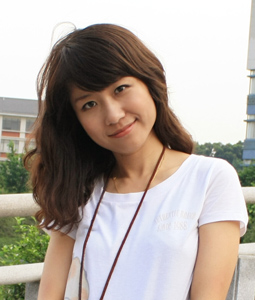| M. Sc. Weiqi Zhou-Hanf | |||||||
|
Publications(up to 2018)
-
Robust Holographic Generation of Arbitrary Light Patterns: Method and Implementation, (2018), MasterarbeitBibTeX ABSTRACT »
ABSTRACT »In the Discrete Quantum Simulator (DQSIM) experiment in Bonn it has been planned to study topologically protected transport of atoms along the edges separating distinct topological phases. To realize sharp edges, structured intensity patterns will be used and are to be holographically projected onto the caesium atoms trapped in a two-dimensional (2D) state-dependent optical lattice. A robust technique to reproduce sharp-edged diffracted patterns has been accomplished and is presented in this thesis. This technique is based on a Gerchberg-Saxton-like algorithm, which has overcome the well-known stagnation problem and is able to suppress speckles induced by random phase vortices, and has been further extended to create sharp, diffraction-limited edges in the reconstructed intensity pattern. Computer-generated holograms (CGHs) corresponding to the desired intensity patterns can be calculated with high computational efficiency (∼ 100 iterations) and the intensity patterns can be reconstructed with high fidelity (relative RMS 3.9%).
-
Analyse der Punktspreizfunktion des Abbildungssystems vom DQSIM-Experiment anhand der Fluoreszenzaufnahmen, (2016), BachelorarbeitBibTeX ABSTRACT »
ABSTRACT »Diese Arbeit beschäftigt sich mit der Untersuchung der Atomfluoreszenzbilder, die im DQSIM - Experiment aufgenommen worden sind. Die Fluoreszenzmikroskopie bzgl. des zweidimensionalen Vielteilchensystems hat eine wichtige Bedeutung für das messungsbasierte Quantenrechnen mit Clusterzuständen. Anhand der Fluoreszenzaufnahmen wird das Abbildungsprinzip erläutert, das Konzept der Punktspreizfunktion (engl. point spread function, kurz PSF) und der Faltung wird eingeführt und deren mathematische Eigenschaften werden vorgestellt. Durch die Analyse der PSF wird die reale numerische Apertur (kurz NA) zusammen mit dem Strehl-Verhältnis (engl. Strehl ratio) untersucht. Die Anwendung der Zernike-Polynome wird ebenso einen Einblick in die Analyse der optischen Aberrationen eines Abbildungssystems anbieten.
Forschungsgebiete
Unsere Gruppe
Veröffentlichungen
Abgeschlossene Projekte
Lehre
Weitere Informationen
Anmeldung
Vorträge
- Curtius Lectures
- 03/05/22 - 06/05/22










